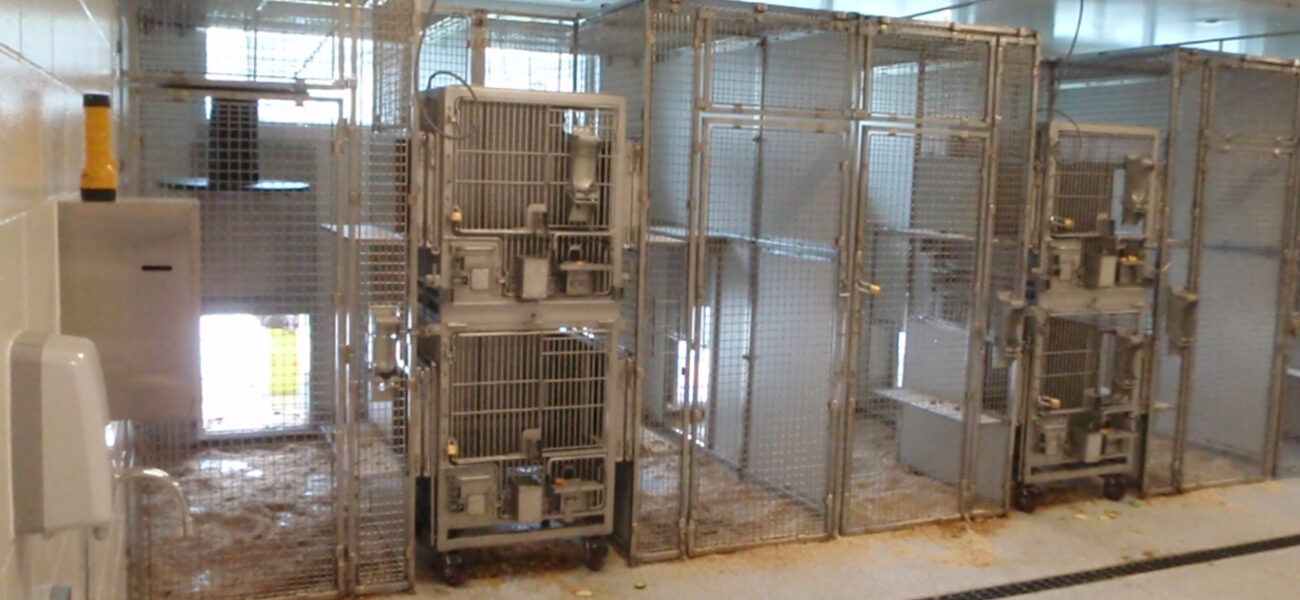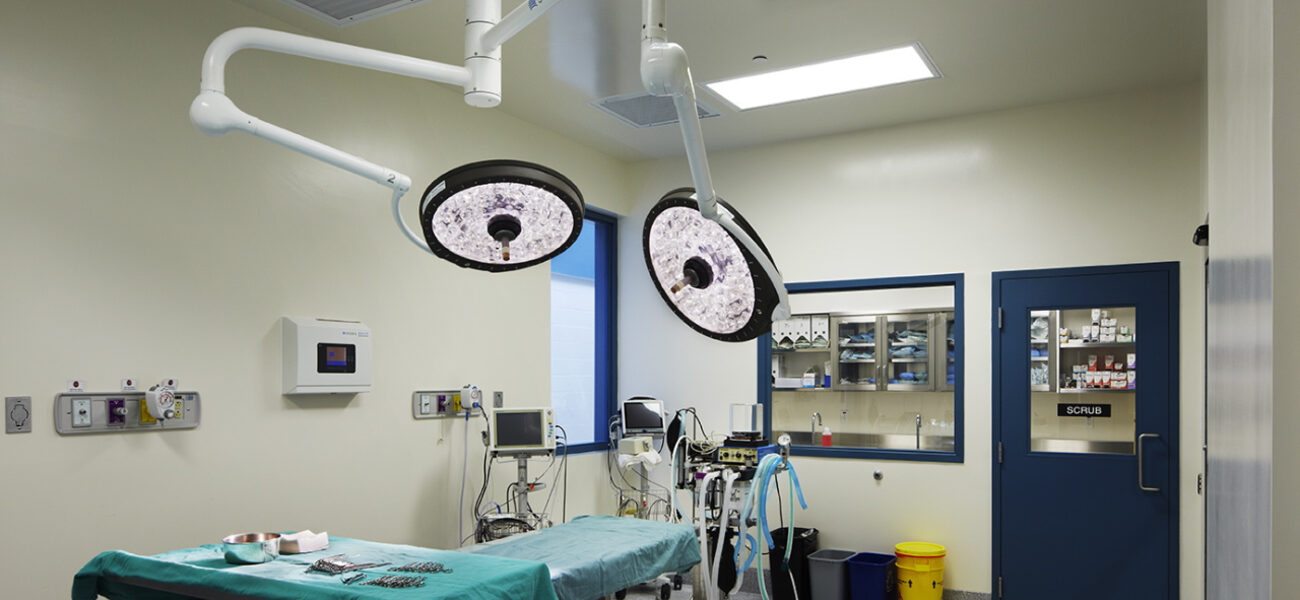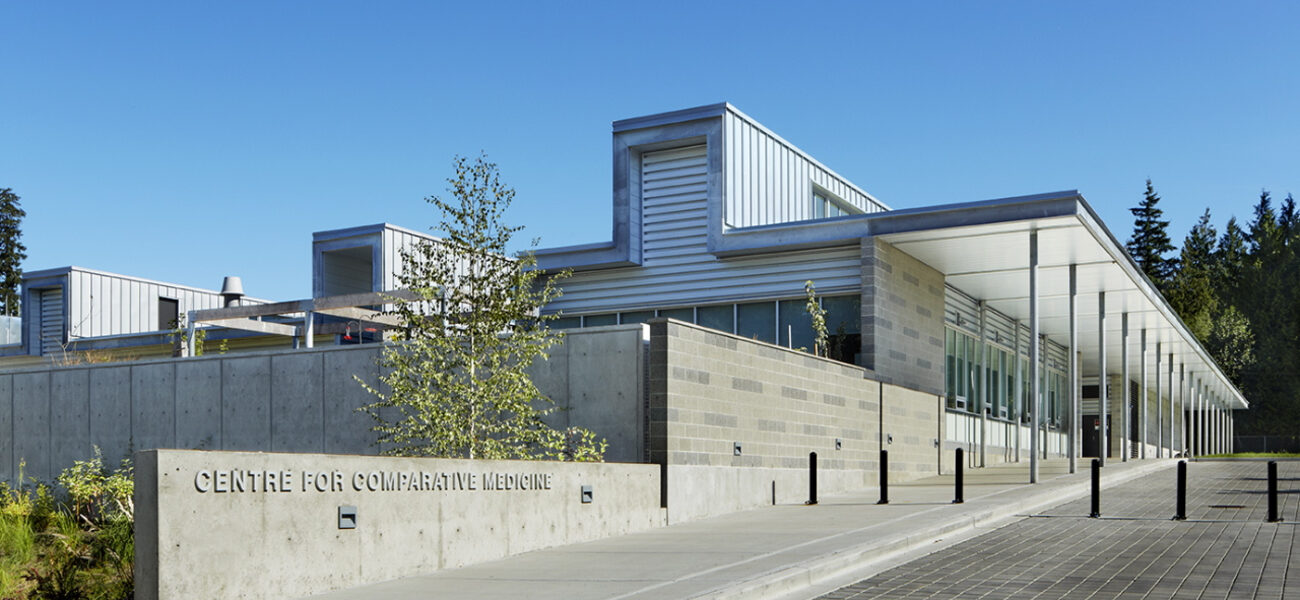The University of British Columbia's (UBC) state-of-the-art Centre for Comparative Medicine (CCM) demonstrates how providing an optimal environment for a variety of species not only is positive from an ethical standpoint, but also fosters better scientific research and can be a good business decision.
The CCM is the biggest large-animal vivarium in western Canada and the primary large-animal research facility in British Columbia. Opened in February 2012, the new $20 million, 50,000-sf building houses a range of species—including rabbits, pigs, exotic reptiles, and primates—in indoor/outdoor facilities. Roughly 1,000 protocols are in effect annually within the UBC system, yet the animals have experienced few health problems or other issues that would harm them or the research.
“It isn’t just about feeling good about keeping animals for research,” says Chris Harvey-Clark, DVM, director of UBC’s Animal Care Services. “It is also quite defensible from a research viewpoint. The old adage that good welfare supports good science is evident at our facility. The scientific results speak for themselves: We have been able to conduct experiments here that have failed elsewhere.”
History of UBC and Its Animal Welfare Practices
UBC enrolls roughly 50,000 students and has $500 million a year in research funding with 340 primary investigators working on protocols each year, says Harvey-Clark. UBC’s Animal Care Services program employs about 115 people who care for and utilize 225,000 animals per year. Prior to completion of the new CCM, the animal care program was disbursed among 17 campus-based buildings and eight hospital-based facilities.
Two of Canada’s four chairs in animal welfare are based at UBC. When UBC needed to update 1970s-era facilities, leaders wanted the new construction to reflect the animal-welfare-friendly values that have been in place since the 1980s, says Harvey-Clark.
“UBC has dedicated itself to the use of research animals in a welfare-friendly fashion,” he says. “But we needed to build a facility that would facilitate these practices.”
In fact, animal welfare was the main program driver when facility planning began in 2004. But they also had to amalgamate 250,000 sf of inefficient space into 50,000 sf; train 800 people per year; conduct zoology research; incorporate a large animal surgical research program; include a diagnostic laboratory, materials management for a large university, and imaging; and plan for the unknown.
“To try and put this all under one roof was quite a challenge,” notes Harvey-Clark.
Why Animal Welfare?
Animal welfare was a driving force for several reasons:
- Good welfare supports good science.
- Providing enriched, social, and species-appropriate environments has documented research benefits.
- Such an environment keeps animals healthy.
- Welfare-friendly facilities can decrease veterinary, infrastructure, and other operating costs.
- The practice boosts morale of staff and PIs, leading to better retention rates.
- The idea was congruent with UBC’s institutional culture and programs.
To get everyone on board, the planning team created a shared vision by consulting, involving, and building consensus among various constituencies: the campus community, researchers, veterinary and animal care staff, treasury and finance departments, management, and the campus planning department.
“When you create a facility like this, you have to pull together a lot of people with different agendas,” says Harvey-Clark.
Together, they established two main focal points: the animal-focused culture, for the reasons already stated; and flexibility, because they can’t predict future animal needs.
Turning a Vision into Reality
The vision for the CCM facility was boiled down to five focus areas:
- Flexibility—Support multiple fields of research, be adaptable for a variety of species, and support new trends.
- Environment—Take advantage of natural environment, use sustainability methods, and have unobtrusive security.
- Learning—Create a community of scientists, enable collaborative methods, and create a place perceived as a center for animal work.
- Progression—Establish ways to transfer knowledge between faculty and students, support current and future technology, and enhance common goals.
- Culture—Create a new beginning for the program; focus on the joy of discovery as well as the animals.
The final design is a U-shaped facility with a main hub where administration, mechanical operations, containment, cage wash, a public area, training, and imaging are located. A “conventional wing” houses animals such as pigs, rabbits, reptiles, and birds, and all the rooms are adaptable. The “containment wing” houses primates and sheep, and contains a large, undeveloped space where any species can be accommodated. A paddock area inside the U is divided by gates and fences so spaces can be interconnected for grazing and socializing. Some materials management (workshop, storage, and agricultural vehicle storage) is handled in a separate building nearby.
“We have biocontainment and standard conventional holding in the program. We can take a pig run and turn it into a cat run or an avian run because of the flexibility in the design. We also have some unique features like the capacity to house large, dangerous reptiles,” explains Harvey-Clark.
Conventional holding rooms and surgeries are located in one area, with the containment area nearby, and an overlap zone through the diagnostics lab and pathology area. Those rooms can be either positive (they are part of the conventional facility), or negative (they are locked off as part of the containment facility).
“This is important because those rooms are high-cost real estate and we want to maximally utilize them,” he says.
The planning team positioned the building to maximize the amount of solar exposure in outdoor runs and paddocks. Other features include a state-of-the-art surgery suite, built-in dust control vacuums for the contact bedding, heating coils in the floors of animal cages, and two staff residences for 24/7 animal care and security. The operating rooms are similar to human operating rooms, and the CCM is designed to convert to a human emergency treatment facility if necessary.
“We can repurpose this whole building for treating people if we have to,” notes Harvey-Clark.
A tissue digester on site hydrolyzes biological waste at about 10 percent the cost of traditional incineration, which is not permitted. The device emits few odors, which don’t penetrate the rest of the building, he says.
The Carter2Systems primate caging provides the wider platforms and warmer materials UBC sought. The cages are flexible enough to work with other caging brands, such that primates can be moved with little interference by the researchers.
A last-minute add-on was a SPECT imaging machine (Single Photon Emission Computed Tomography), which provides three-dimensional imaging at a higher resolution than traditional PET and CT scans. Because the technology is in the experimental stage, UBC got a grant for the machine, which can follow the path of a molecule through an animal’s body to see where medicine travels and how the body metabolizes it.
The Economics of Animal-Friendly Housing
The primary savings from animal-welfare-friendly housing comes from the reduction in health care costs.
“Welfare friendly housing equals healthy animals,” explains Harvey-Clark. “For example, non-etiological diarrhea is something you see in primates, commonly associated with stressful, high-intensity environments. There can be up to a 30 percent incidence in high-density populations. If you have a lot of primates, this is a lot of manpower.”
The illness’s typical duration is five days. In CCM’s environment (the most expensive city in Canada) the treatment time, lab costs, drug costs, and down time for the study in which the primates are involved adds up to about $350 for every treatment round, says Harvey-Clark.
“Anything you can do in terms of environmental design that lessens these environmental ailments is advantageous. We haven’t seen non-etiological diarrhea in our primates in the last 10 years.”
Rabbits housed in environments where they can’t stand up or exercise can become obese, and their cardiovascular systems suffer, says Harvey-Clark. They are social animals, and if they can’t interact, boredom often causes them to eat more or engage in self-harming activities like plucking and eating their fur. This can result in hairballs that require surgery. The rabbits can be worth $10,000 simply from the antigens they are testing, not even counting the time spent by researchers working on the project.
Numerous elements contribute to animal-friendly design, explains Harvey-Clark. Many of the species they house at CCM are social, so the design includes areas where they can congregate in social groups. Animals have access to indoor and outdoor spaces, natural lighting, and direct sunlight. Many of the animals can be housed outside and inside because CCM researchers test them regularly for pathogens, and most are not susceptible to highly contagious diseases.
“If we have to, we can go to full containment, so we have the best of both worlds. We also are lucky to have a permissive climate. This isn’t a program you could do everywhere, but we took advantage of the climate we were in—both the animal-welfare-friendly University climate and the actual meteorological climate.”
Contact bedding (natural material like sand or soft wood shavings) is important to layer on the floors, he says, because most species like this type of bedding, it’s a more natural environment, and the animals can forage in it for treats.
“Animals are no different than people in wanting soft surfaces.”
Exercise space and areas with three-dimensional complexity, where the animals can move up and down and hide from each other, are important, especially for species like rabbits and primates, says Harvey-Clark.
Being able to view the animals without being seen by them is another important element. Treating and housing wild animals as wild animals is critical, he adds.
“When we manage—particularly research primates—the way we manage research rodents, for instance, things start to break down, and those animals don’t adapt well. They are wild animals. Try to minimize the amount of manhandling. Build systems that allow you to train the animals easily, systems that work with the animal.”
Providing varying diets and species-appropriate foraging opportunities enriches the animals’ environment. Harvey-Clark adds that people should also consider creature comfort in the housing design, such as soft, rounded, and heated surfaces; oversized perches; and warm materials vs. metal.
“Over the last 40 years, we have emphasized the extremely sanitize-able environment and de-emphasized the comfort of that environment. There is a lot of beautiful stainless steel and metal that will last forever, but unfortunately it is cold, hard, sharp, and not very comfortable for the animals.”
Keeping the animals’ environments as natural as possible also enhances research because results are not skewed by issues like anxiety. Primates, often used in Parkinson’s research, can become maladapted and perform self-injuring, stereotypic behavior when they can’t forage or don’t have access to a three-dimensional exercise environment, he says. When primates engage in stereotypic behavior, they produce endogenous opioids, which can affect how they react to treatment methods.
“Those problems have a substantial ethical cost, and the animals also are not normal animals from a research standpoint. We don’t see a lot of typical husbandry-induced diseases. The animals’ health is better, and research results are better. This is especially true in studies where you keep animals for a long period of time,” says Harvey-Clark.
He acknowledges there are additional costs associated with welfare-friendly design. Contact bedding can get expensive because it has to be changed regularly, and there are labor costs associated with handling it, as well as dust and cleaning issues.
Lessons Learned
Welfare-friendly housing requires more space than a typical vivarium, so it would not work in an urban setting where space and land costs are at a premium, says Harvey-Clark. UBC had nearly 5 acres available for the CCM.
“You have to balance the costs versus what actually happens to the animals.”
Better-kept animals mean happier employees as well, says Harvey-Clark. The work environment at CCM is a family atmosphere. People are proud of the facility and the way animals are treated.
“Having a friendly work environment where animals look good and are happy is a big factor in retaining staff.”
By Taitia Shelow
This report is based on a presentation Harvey-Clark made at Tradeline’s 2012 Animal Research Facilities conference.



